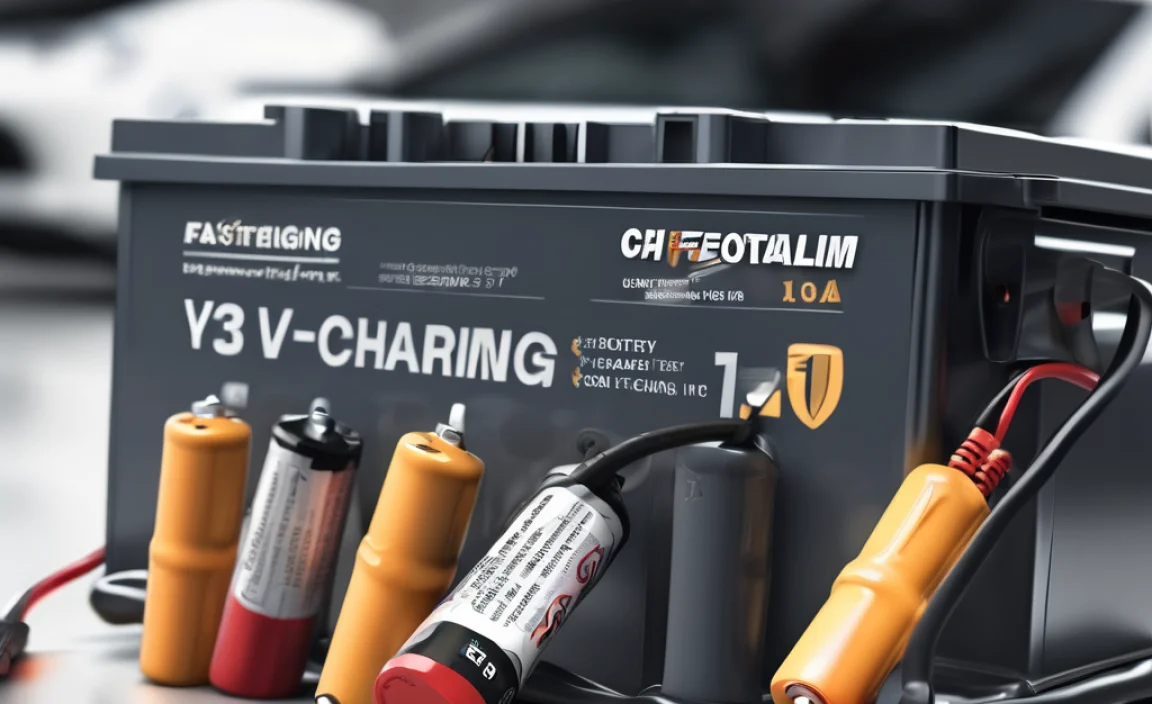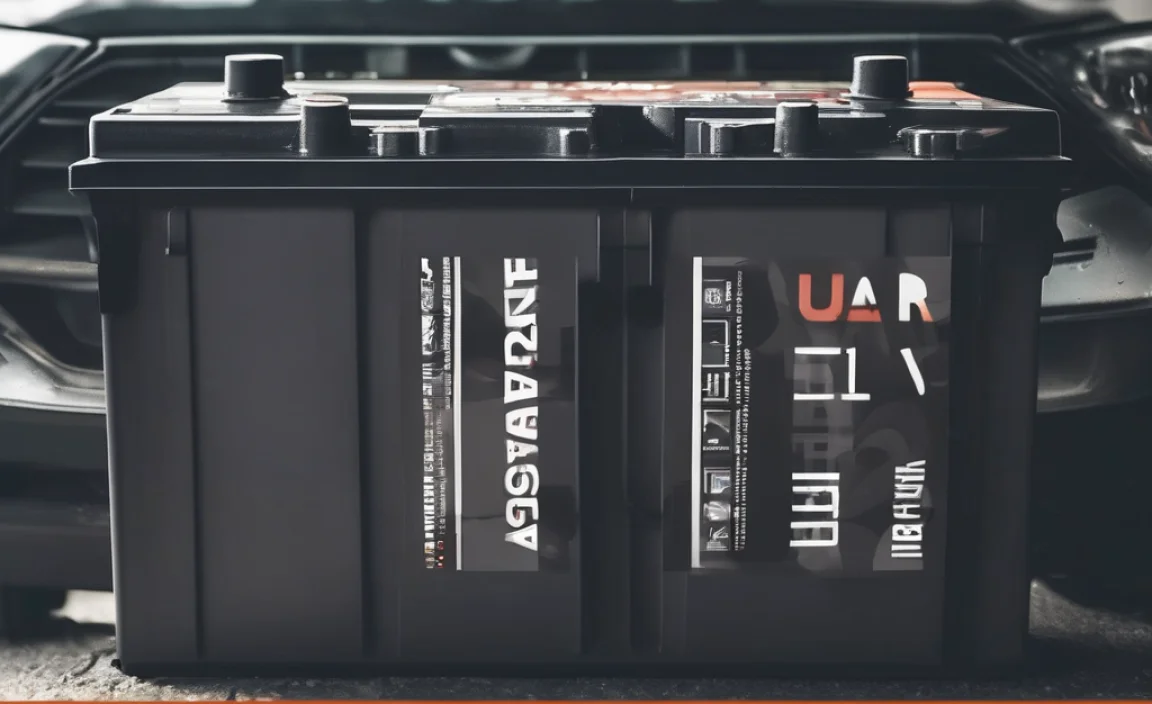Quick Summary: Finding the right AC/DC adapter for your LED lights is surprisingly important! It ensures your lights shine bright, last longer, and don’t get damaged. This guide breaks down how to pick the perfect adapter for your LED lighting needs, making it super simple.
Ever bought some cool LED strip lights, only to realize you don’t have the right power source? It’s a common snag! You’ve got these brilliant lights, ready to transform your space, but without the proper AC/DC adapter, they’re just… well, wires. Choosing the wrong one can lead to dim lighting, flickering, or even a burnt-out bulb. Don’t worry, I’m here to help you navigate this! We’ll make sure your LED lights get the power they need to look their best. Let’s get your LED project powered up the right way, step-by-step.
Why the Right AC/DC Adapter is Key for Your LED Lights
Think of an AC/DC adapter as the bridge between your wall outlet (which provides AC power) and your LED lights (which need DC power). It’s not just about getting the lights to turn on; it’s about powering them safely and efficiently. Your LED lights have specific power requirements, and the adapter is what delivers that power perfectly. Using the wrong adapter is like trying to fill a tiny teacup with a fire hose – it’s just not the right fit and can cause problems.
LEDs are fantastic because they use less energy and last much longer than older types of lights. But to get all those benefits, they need consistent, correct power. A good adapter is essential for:
- Protecting your lights: Prevents damage from too much or too little voltage.
- Ensuring brightness: Delivers the right power for your lights to shine at their full potential.
- Extending lifespan: Consistent, correct power means your LEDs work for their expected life.
- Safety: A well-made adapter reduces the risk of overheating or electrical faults.
Understanding AC vs. DC Power: A Simple Breakdown
Before we dive into choosing an adapter, let’s quickly chat about AC and DC power. It’s less complicated than it sounds!
- AC (Alternating Current): This is the type of electricity that comes from your wall outlets. The direction of the electrical current constantly changes, flowing back and forth.
- DC (Direct Current): This is the type of electricity used by most electronic devices, including LED lights. The current flows in only one direction.
So, your wall outlet gives you AC, but your LED lights need DC. That’s where the AC/DC adapter, often called a power supply or transformer, comes in. Its main job is to convert that AC power from your outlet into the DC power your LEDs can use.
Key Specs to Look For on Your LED Lights and Adapter
When you’re shopping for an AC/DC adapter for your LED lights, you’ll see a few numbers and symbols. Don’t let them scare you! These are the important bits that tell you if they’re compatible. You’ll usually find this information on the LED light’s packaging, on the light itself, or in its manual. The adapter will have its own specs printed on it too.
1. Voltage (V)
This is one of the most critical factors. Voltage is like the “pressure” of the electricity. Your LED lights will operate at a specific voltage, commonly 12V or 24V for most home LED strip lights. Some smaller LEDs might use 5V.
- What to look for: The voltage output (Vout) on the adapter MUST match the voltage requirement of your LED lights.
- Why it matters:
- Too high voltage: Can fry your LEDs, causing them to burn out instantly or very quickly.
- Too low voltage: Your LEDs might be dim, flicker, or not light up at all.
2. Amperage (A) or Current (mA)
Amperage (or current) is the “amount” of electricity your lights will draw. It’s measured in Amperes (A) or sometimes milliamps (mA), where 1000mA = 1A.
- What to look for: The adapter’s amperage output (Aout) should be equal to or greater than the total amperage your LED lights will draw.
- Calculating your needs: You’ll need to know roughly how much power your LED lights consume per foot or meter. This is often listed as watts per foot (W/ft).
- 1. Convert Watts to Amps: Use the formula: Amps = Watts / Volts.
- 2. Calculate Total Amps: Multiply the amps per foot by the total length of LED strips you’ll be using.
- Example: If your 16-foot LED strip uses 4.8 watts per meter, and you’re using at least 10 meters (about 33 feet), you’ll need to figure out the total wattage first. If 1 meter uses 4.8W, then 10 meters use 48W. If your lights are 12V, then 48W / 12V = 4 Amps. So, you’d need an adapter with at least a 4A output. It’s always good to go a little higher, maybe 5A or 6A, to be safe.
- Why it matters:
- Adapter too low amps: The adapter will overheat, potentially failing or even posing a fire risk. Your lights will likely be dim or flicker.
- Adapter too high amps: This is generally okay! Your LED lights will only draw the amperage they need. Having extra capacity is like having a buffer.
3. Wattage (W)
Wattage is the measure of total power consumed. It’s calculated by multiplying Voltage by Amperage (Watts = Volts x Amps). Many LED products list their power consumption in watts per foot or meter.
- What to look for: The adapter’s total wattage output should be at least 20% higher than the total wattage your LED lights will draw.
- Why it matters: Running an adapter at its absolute maximum capacity all the time can shorten its lifespan and lead to overheating. Giving it a little headroom ensures reliability.
- Calculating wattage: If you know the voltage and amperage of your LED lights, you can calculate the total wattage they need. If you know the wattage per foot and the length, you can calculate the total wattage.
4. Connector Type
This is the physical plug that connects the adapter to your lights. Most LED strips use a common barrel plug connector, often 5.5mm x 2.1mm. Some might have different connectors, especially if they come as a kit.
- What to look for: Ensure the connector on the adapter matches the connector on your LED light power input.
- Solutions for mismatches: If the connectors don’t match, you can often find adapter cables or pigtail connectors that can bridge the gap.
5. Polarity
This refers to the positive (+) and negative (-) terminals of the connector. Most DC barrel connectors have the center pin as positive and the outer sleeve as negative. Incorrect polarity will prevent the lights from working and can potentially damage them, although many modern LEDs are protected against this.
- What to look for: Check the symbols for polarity on the adapter and, if possible, on the LED light’s power input. A small diagram usually shows which side is positive and which is negative.
Choosing the Right AC/DC Adapter: A Step-by-Step Guide
Okay, let’s put all that into practice! Follow these steps to select the perfect AC/DC adapter for your LED lights.
Step 1: Identify Your LED Lights’ Power Needs
This is your starting point. Look at the packaging, manual, or the lights themselves for:
- Voltage (V): Is it 12V, 24V, or 5V?
- Wattage (W) per foot/meter: How much power does each unit length of your LED strip use?
- Total length of LED strip: How many feet or meters will you be lighting up?
Step 2: Calculate the Total Wattage Required
Multiply the wattage per foot/meter by the total length of your LED strip.
- Formula: Total Watts Needed = (Watts per Foot/Meter) x (Total Length in Feet/Meters)
Step 3: Calculate the Minimum Amperage Required
Now, use the total wattage and the voltage to find out how much amperage (current) your lights will draw.
- Formula: Minimum Amps Needed = Total Watts Needed / Voltage
Step 4: Add a Safety Margin (Crucial!)
This is where we make sure the adapter isn’t strained. Add at least 20% to your minimum amperage calculation.
- Formula: Recommended Amps Output = Minimum Amps Needed x 1.20
Round this number up to the nearest common adapter amperage rating (e.g., if you calculate 2.5A, look for a 3A adapter).
Step 5: Find an Adapter with Matching/Sufficient Specs
Look for an adapter that meets these requirements:
- Output Voltage (Vout): Must exactly match your LED lights’ voltage.
- Output Amperage (Aout): Must be equal to or greater than your Recommended Amps Output.
- Connector Type and Polarity: Should match your LED lights, or be easily adaptable.
Step 6: Consider the Adapter’s Wattage
While you’ve already used wattage to calculate amperage, it’s good to check the adapter’s total wattage output. It should be sufficient to handle your calculated load plus the safety margin.
- Formula: Adapter Wattage = Adapter Vout x Adapter Aout
- Ensure this calculated wattage is higher than your Total Watts Needed.
Example Scenario: Lighting Up a Bookshelf
Let’s say you bought a 10-foot roll of LED strip lights. The packaging says they use 3 watts per foot and are 12V.
- LED Needs: 12V, 3W/ft, 10ft total length.
- Total Watts Needed: 3 W/ft 10 ft = 30 Watts.
- Minimum Amps Needed: 30 Watts / 12 Volts = 2.5 Amps.
- Recommended Amps Output: 2.5 Amps 1.20 = 3.0 Amps.
- Adapter Search: You need a 12V adapter with at least 3.0 Amps output. A 12V, 3A adapter would be perfect. If you can’t find an exact 3A, a 12V, 4A or 5A adapter would also work.
Types of AC/DC Adapters for LED Lights
There are a few common styles of adapters you’ll encounter:
1. Wall Plug Adapters (Wall Warts)
These are the most common for smaller LED projects or individual LED strips. They plug directly into a wall outlet and have a cord with a barrel connector leading to your lights. Simple and convenient.
2. Desktop Power Supplies
These look like small power bricks for laptops. They have a cord that plugs into the wall, a brick in the middle, and another cord with a connector that goes to your lights. They often provide more power and are good for longer runs or brighter LED strips.
3. Hardwired Power Supplies
These are more permanent solutions, often used in custom installations or commercial settings. They are usually installed inside junction boxes or cabinets and are wired directly into your home’s electrical system. For DIY beginners, the first two types are more suitable.
Table: Adapter Specifications Quick Check
Here’s a handy table to summarize what you need to check when buying an adapter.
| Specification | What to Look For | Why It’s Important |
|---|---|---|
| Output Voltage (Vout) | Must MATCH LED light voltage (e.g., 12V) | Prevents damage from over or under-powering. |
| Output Amperage (Aout) | Must be EQUAL TO OR GREATER THAN required amps (with safety margin) | Ensures lights are bright and prevents adapter from overheating. |
| Output Wattage (Wout) | Must be GREATER THAN total LED light wattage | Confirms the adapter can handle the load safely. |
| Connector Type | Must MATCH LED light input connector | Ensures a physical connection can be made. |
| Polarity | Must MATCH LED light polarity (usually center positive) | Ensures correct flow of DC power, preventing damage. |
Where to Find Reliable AC/DC Adapters
You can find AC/DC adapters for LED lights in several places:
- Online Retailers: Amazon, eBay, and specialized electronics stores offer a vast selection.
- LED Lighting Stores: Dedicated LED lighting shops often carry high-quality, specific power supplies for their products.
- Electronics Supply Stores: Stores like Fry’s Electronics (if available in your area) or Digi-Key/Mouser (more for advanced hobbyists) have options.
- Hardware Stores: Some larger hardware stores carry basic adapters, especially for common LED strip kits.
When buying, always check reviews and look for reputable brands. A cheap, unbranded adapter might seem like a bargain, but it could end up costing you more if it fails.
Safety First! Tips from Roy Walker
Powering electronics always involves a bit of responsibility. Here are my top safety tips:
- Never Exceed Max Load: Don’t overload your adapter. If your calculations show you need 4A, get at least a 4A, preferably a 5A adapter.
- Check for Ventilation: Make sure your adapter has some airflow around it. Don’t bury it in a hot, enclosed space. Most adapters can get warm, but they shouldn’t be too hot to touch comfortably.
- Use Proper Connectors/Extension Wires: If you need to extend the wire, use appropriate gauge wire. Poor connections can create resistance and heat.
- Inspect Regularly: Especially if you have them in a hard-to-reach place, check your adapters and connections periodically for any signs of wear, melting, or damage.
- Buy Quality: Stick to well-known brands and retailers. Check for certifications like UL or CE, which indicate the product has met safety standards. For more on electrical safety, resources from the Electrical Safety Foundation International (ESFI) can be very helpful.
- Unplug When Not in Use (Optional but Recommended): For extra peace of mind, unplug the adapter when you won’t be using the lights for an extended period.
Troubleshooting Common LED Lighting Problems
Even with the right adapter, you might run into a snag. Here are a few common issues and how to fix them:
1. LED Lights Are Dim
- Possible Cause: Insufficient amperage from the adapter.
- Fix: You might be using an adapter with an amperage output that’s too low for the total length of your LED strip. Recalculate your needs and upgrade to a higher amperage adapter. Even if the voltage matches, low amperage will restrict brightness.
- Possible Cause: Voltage drop over long runs.
- Fix: If you’re running a very long strip (over 15-20 feet), voltage can drop towards the end. Consider powering the strip from both ends, or use a thicker gauge wire for the power feed if you’re making custom connections.
2. LED Lights Flicker
- Possible Cause: Loose connection.
- Fix: Check all connections between the adapter, any extension wires, and the LED strip itself.
- Possible Cause: Adapter struggling to keep up.
- Fix: This can happen if the adapter is just barely meeting



